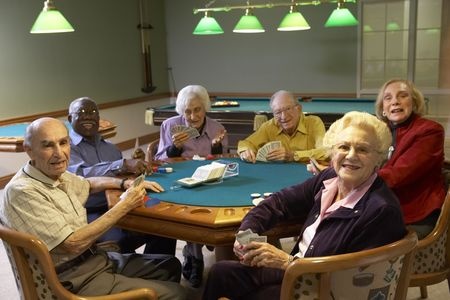Brookdale makes a big investment in cognitive and sensory technology that benefits seniors.
 Senior Living communities have been snail paced about adopting technology for a bunch of reasons, some good and some not so good. The not so good reasons include complacency and fear. The sensible reasons include cost and trying to figure out if a particular technology really makes a difference and makes economic sense.
Senior Living communities have been snail paced about adopting technology for a bunch of reasons, some good and some not so good. The not so good reasons include complacency and fear. The sensible reasons include cost and trying to figure out if a particular technology really makes a difference and makes economic sense.
Making a Difference
I challenged Jack York the founder of It’s Never 2 Late®” (iN2L®) tell me about how his system makes a practical difference. With zero hesitation, he said “Don’t take my word for it, talk to Brookdale Senior Living so I recently I spent some talking with Juliet Holt Klinger, the VP of Dementia Care for Brookdale about their wide adoption of the iN2L® system in their Clare Bridge Alzheimer’s and dementia care communities. Prior to joining Brookdale she had seen the iN2L® system and felt it could make a real difference in the lives of seniors with dementia.
She was particularly attracted to the system because it was designed specifically for older adults with physical and cognitive disabilities. This was especially important for the residents who tended to withdraw from family and staff creating a seemingly impenetrable level of isolation. Brookdale did a pilot rollout in about a dozen of their Clare Bridge communities that included an informal internal research process to look at the efficacy of the system. The results exceeded Juliet’s expectations:
- They found the systems generated a higher level of engagement with life, on the part of residents.
- It turned out to be a great tool that facilitated caregivers getting to know their residents better; something that is a key component of person centered care.
- It was a flexible tool, meaning it could be used by therapists, program coordinators and care associates.
- For those residents with early stage dementia it provided a healthy cognitive workout. For those with later stage dementia it provided great sensory stimulation.
Since the pilot they have rolled out at least one system in each of their more than 250 memory care communities and are currently in the process of deploying it in many of their assisted living communities. as a part of their InTouch Program. One of big problems with new technology is that often when the novelty has worn off, usage plummets to little or nothing. Brookdale has found that over time, their staff has found more ways to use the system with it typically in operation more than 5 hours each day.
What About the Money?
My final question was to ask the rubber meets the road question. What is the return on investment for the systems?
She told me she wished that she could provide some specific numbers but said that from her perspective it was difficult to quantify a distinct financial or occupancy-based ROI on this resident engagement technology—and that it was actually one of the things that made her admire Brookdales senior leadership, because they were committed enough to make this significant investment solely based on increasing the quality of life for the residents they serve.
That being said, if you were to ask Jack York about the return he could tell you story after story of families that were looking at a variety of different senior living communities and that when it came to decision time, the It’s Never 2 Late system® was the deciding factor.
How do you make these kinds of adoption decisions? What technologies or programs have you adopted to benefit your residents without a clear ROI? Have you adopted technology that had had a clear ROI?








